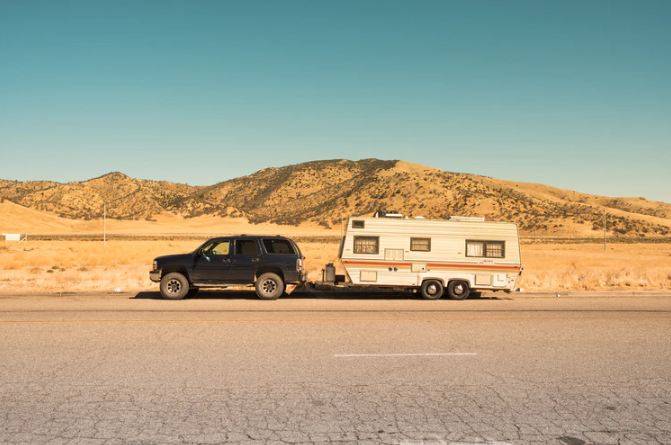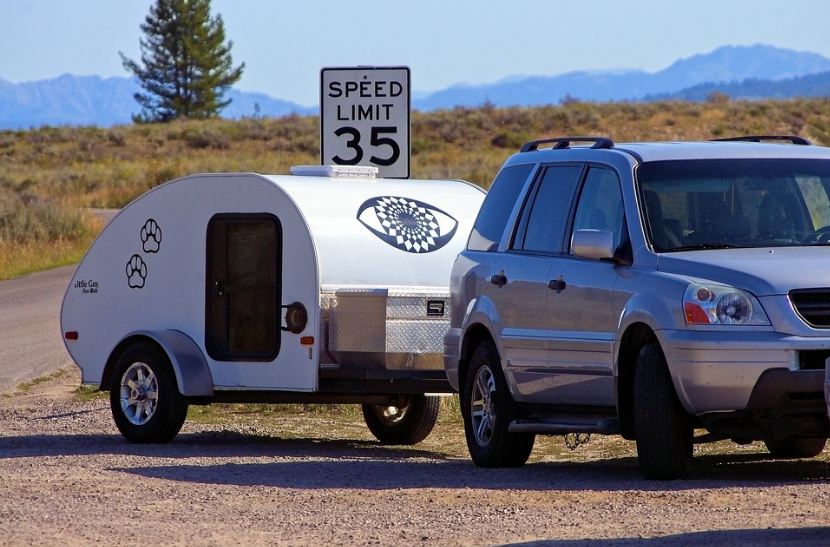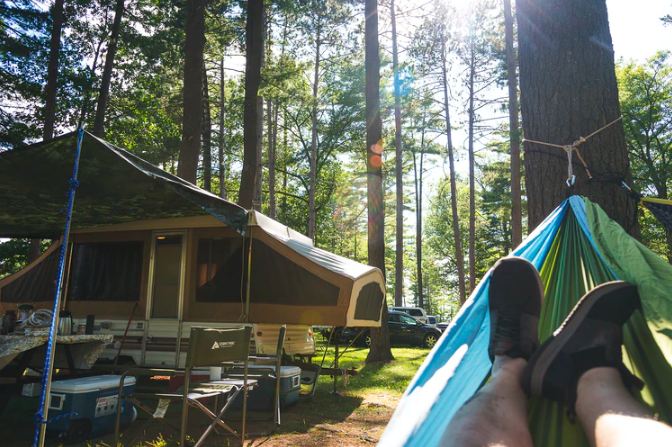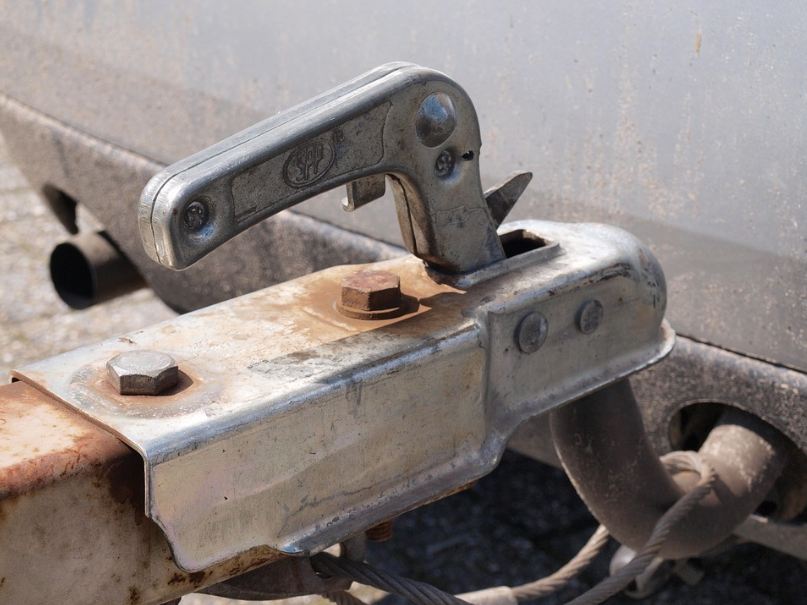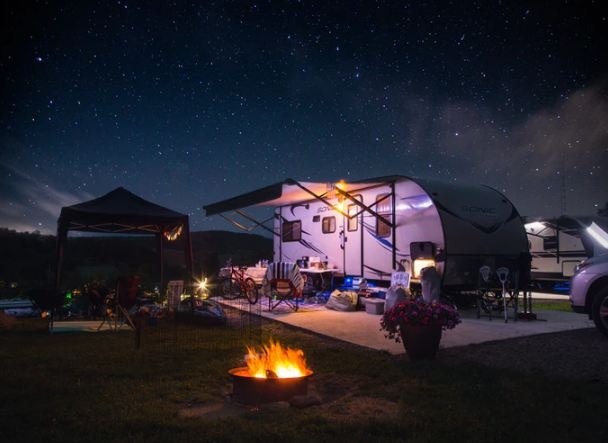Whenever you go on a long road trip or vacation with your family and friends, it is always best to bring a trailer with you along with your trusted and reliable vehicle. The purpose of the trailer is for you to place items there that cannot fit inside your car, or it can also serve as an extension for your vehicle, which can then act as a room for you to sleep or relax on during stopovers. When planning a road trip using a mini travel trailer is one of the best choices for the camper who travels alone or with a partner.
While trailers are very convenient to have with you during month-long trips, towing the trailer and knowing how to maintain it can be pretty challenging. Because trailers are usually bigger than cars, handling the vehicle with a trailer towed can be difficult for beginners. If you are one of those newbies in the world of trailers, we are here to provide you with a quick guide on what you will need to learn about it. So, let’s already get started with the beginner’s guide to trailers.
Basic Parts of a Trailer
The trailer is a fairly simple piece of equipment for cars, so there are not a lot of parts that are involved in the construction of it. Here are the basic parts of the trailer that you should know about.
- Coupler – the coupler is the part responsible for connecting the trailer to a vehicle. The coupler has a scooped-out or curved end that sticks out of the trailer, and that end would then connect to the ball hitch.
- Ball Hitch – the ball hitch is another part that connects the vehicle and the trailer together, although this part is installed to the vehicle rather than on the trailer. As its name suggests, the ball hitch is shaped like a ball and fits right into the scooped-out end of the coupler, thus forming a secure connector. Take note that couplers and fifth wheel hitch can come in different sizes, so make sure that you order the same size for both parts.
- Safety Chains – these chains are found at the bottom of the ball hitch and the coupler once they are connected. Safety chains act as a “bed” for the coupler and the hitch if ever they get disconnected. So, the chains prevent the coupler from sagging and reaching the surface where it may get damaged while the vehicle is moving.
- Body – The biggest part of the trailer is the body, which is where the trailer’s interior should be located. The body can have different shapes and sizes depending on the type of trailer, so they can either be small to fit two people or large to fit up to five passengers.
- Wheels – of course, the trailer wouldn’t move with the vehicle without a set of wheels. The wheels of a trailer can be in different sizes, so you would need to see if those wheels can match well with the height of your car.
- Taillights – since the trailer would obstruct the rear of your car, it would need to have tail lights so that your car’s lights would still be visible for vehicles behind you. The taillights of the trailer need to be functioning properly, so always check the lights of the trailer before renting or purchasing it.
The other parts besides the ones listed above would depend on what type of trailer you will get, which we will get to later. Always inspect these basic parts to know if they are working well, as damages with these parts can cause problems during your road trip. To read more about basic trailer inspection, check out our “9 Things You Need to Check in Car Trailers” article.
Types of Trailers
There are several types of trailers that you can choose from, and each of these types can have its own pros and cons. So, choosing a trailer type would depend on what you will need for the trip, from smaller trailers to a storage container trailer and bigger storage trailers for transport only. Here are the most well-known types of trailers you can get.
Standard Travel Trailer
When you think about trailers suitable for travel, you are probably imagining the appearance of the standard travel trailer, the type of trailer that looks like a makeshift apartment room that has a kitchen, a bed, and a bathroom.
These standard travel trailers are the most suitable for long road trips since they have everything you will need to have a convenient time traveling. There are some travel trailers that have slide-outs, which are a portion of the trailer that extends outwards to the sides in order to increase the space inside the trailer. These slide-outs would usually be extended in order to give more space for passengers to move around.
Teardrop Trailer
Teardrop trailers are much smaller than that standard ones, so if you have a relatively small car, you can get a teardrop trailer so that you won’t have to push your vehicle too much in carrying the weight of the trailer. What’s great about teardrop trailers is they are more reliable and easier to maneuver around since you are not towing a large trailer.
However, because it is so small, it has limited space, so it doesn’t have a bathroom and a kitchen. But, the interior of a teardrop trailer can serve as a bedroom or a storage space where you can put your luggage and other amenities inside. So, you can treat the teardrop trailer as a towable moving tent. Teardrop trailers are more suitable for short trips that may involve camping.
Stand-Up Trailer
The stand-up trailer shares similarities with the teardrop trailer, but the difference is that stand-up trailers have much more uses and features than teardrop trailers, which are primarily utilized as a bedroom. Stand-up trailers are slightly taller than their teardrop counterparts, so a person can comfortably stand up inside the trailer. In addition, stand-up trailers can serve as a bathroom, kitchen, or whatever is installed or built-in into its interior.
Pop-Up Trailer
Pop-up trailers may look like standard travel trailers while it is being towed and moved, but once it is parked, it can turn into a much bigger trailer because of its numerous slide outs and pop-up parts. Pop-up trailers are ideal for people that want to save space for parking, as these trailers can appear small when they are not in use.
But, once you use a pop-up trailer, you can slide out and pop up portions of the trailer so that it can look much bigger and have more space inside. The drawback to pop-up trailers is that their extended parts may not be as durable as the body of standard travel trailers since they are often made of fabric that is soft yet waterproof. Check out our “Outdoor Fun with Pop-Up Campers” article to learn more about the benefits of this type of trailer.
Toy Hauler
The toy hauler is arguably the biggest type of travel trailer you can get, as it is designed to fit another vehicle inside it, although the vehicles that can fit are jet skis, UTVS, motorcycles, and other small “toy” vehicles typically used for recreation. If you ever plan to bring your jet ski with you during a trip, you can rent or purchase a toy hauler that can protect the jet ski from harsh weather conditions and damages.
Since toy haulers are so large, they may not be suitable for small vehicles that may have difficulties towing the hauler because of their weight. Besides serving as a portable garage for your “toy” vehicle, the toy hauler also has enough space to serve as a standard travel trailer that has a kitchen, a foldable bed, and a bathroom.
Besides travel trailers, there are also trailers that are specifically designed for trucks. You can learn about those trailers by reading our “A Trucker’s Dream: 8 Types of Trailers (and What They’re Used For)” guide.
Ensuring the Safety of Your Trailer
Maintaining or taking care of your trailer is very important, especially if you are going to use it for longer trips. Here are some tips to ensure the safety of your trailer.
Match the Size of the Ball Hitch to the Coupler
When you are renting a trailer, it is important to always check the size of the trailer’s coupler so that you can get and install the proper ball hitch that can fit perfectly in it. As we have said earlier, ball hitches can come in different sizes, with some of the popular being the 2 inches, the 1 7/8 inches, and the 2 5/16 inches. If you are not sure what to buy, you can ask the rental service about the size of their trailers’ coupler so that you can have a better idea of which ball hitch to rent or buy.
Buying or renting a ball hitch that is the wrong size may cause issues for the vehicle in the trailer, like sudden disconnections or damages due to friction between the coupler and the ball hitch. Get the right ball hitch to have a safer trip while towing the trailer. To get more information on the safety of ball hitches and other pieces of trailer equipment, you can read our Safety Tips for Towing Trailers.
Always Have Spare Tires
While this is a general rule for many car owners, having spare tires is essential for trailers, as you will never know when the wheels of the trailer will suddenly malfunction during a long road trip. Even though it may take up significant space inside, on the sides, or on the back of the trailers, spare tires should always be brought while traveling.
Besides the spare tires, you should also bring with you some tools that could help in changing tires. Some of these tools include the lug wrench used for installing and disconnecting tires, the jack that raises the weight of the vehicle so that you can easily change tires, the wheel chocks that prevent wheels from rotating, and the tire pressure gauge to see if the pressure of the tires is enough to carry the weight of the vehicle. Also, you should bring an owner’s manual with you so that you can refer to it if you forget specific processes or steps in changing tires.
Inspect the Tires of the Trailer Regularly
Of course, you wouldn’t find problems with the tires and replace them if you don’t inspect them regularly. Always check the tires of the trailer for any signs of damages and deflation, as these complications can lead to even worse problems that can impede, disrupt, or stop your road trip from continuing. To know more about what to look for in damaged tires, take a look at our article on How to Know When Your Tires Need Replacing.
It is essential to always have a tire pressure gauge so that you can check the air pressure inside each tire. Moreover, you should also inspect the treads of the trailer’s tires to make sure that they still have a sturdy grip on the surface and won’t get slippery. You can check for the height of the treads using a tread depth gauge, which will show how high treads should be for each tire. The standard height for treads is 2/32 inches, so if the treads of the tire go lower than that, you should replace it immediately since the tire is already worn out.
Get Durable and Reliable Safety Chains
Although they may not look like it, safety chains are arguably the most important parts of the trailer that you should always have installed between the trailer and your vehicle. Without safety chains, the coupler and the ball hitch may not form a stable connection, which can lead to them being disconnected or dislodged. Once they are disconnected, the trailer will have no way to reconnect to your vehicle, and this dilemma may cause accidents on the road.
With safety chains, the coupler and the ball hitch will remain near each other even if they are disconnected. Furthermore, the coupler of the trailer will not sway, skid, or touch the surface while the vehicle is moving since the safety chains act as a net or a bed for the coupler. These features are the exact reasons why safety chains have the word “safety” on their name, so it is always recommended to get them properly installed before you go on a road trip.
And, there you have it, just some of the basic aspects of travel trailers that you need to know before renting or buying one. Remember to properly take care of the trailer you will be using for the trip so that it won’t cause complications while you are driving or on a stopover.

